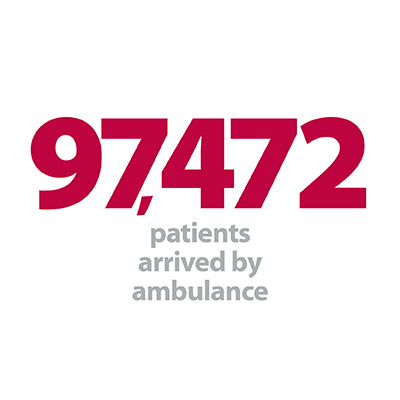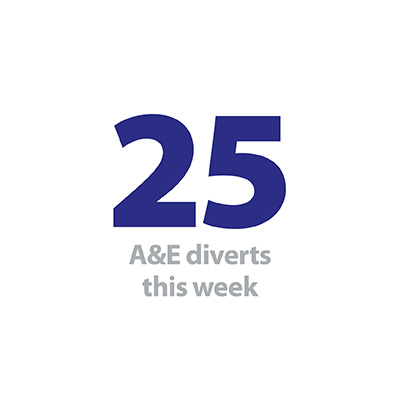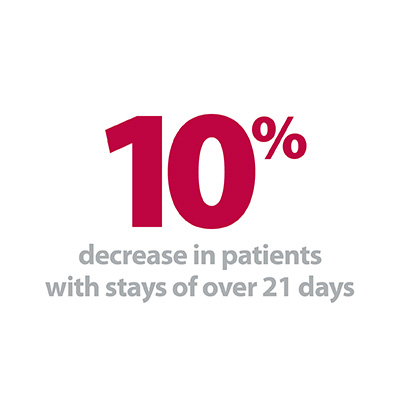


This week marks the beginning of the NHS winter sitreps season. Over the next 13 weeks NHS England will publish data which focuses primarily on hospital capacity and urgent and emergency care.
NHS trusts and increasingly, local systems, place a particular focus on winter planning and ensuring that local health and care services work together effectively to respond to the surge in demand over the winter months.
Building on our winter watch 2017/18 series, this year we will be analysing the weekly data, tracking the experiences of NHS trusts and their staff across all provider sectors and reflecting what it feels like on the frontline.
Week 1
NHS England provided an early Christmas present by publishing the first instalment of the winter sitreps alongside the monthly performance summary. This enables us to get a better understanding of the position for the NHS going into winter.
In relation to emergency care, performance against the A&E four hour waiting time target in November was 87.6% - the lowest for that month since the data collection began. Trusts saw 1,000 additional people within four hours every day in November compared to last year however only 13 trusts met the 95% standard in November.
After record numbers of emergency admissions in October, the numbers stayed at the same level in November which is worrying at this point in the year given these figures are usually sustained or continue to rise over winter.
Trusts are struggling to balance responsiveness to urgent care with other priorities. This is clear as the sector’s performance against the key cancer standards is deteriorating, delayed transfers of care beginning to creep up again and the elective care waiting list now reaching 4.18 million – the greatest it has ever been. All in all, despite trusts’ best efforts we are concerned that this paints a worrying picture as we begin the winter season.
Turning to the winter sitreps specifically, despite warmer temperatures across England compared to the same time last year, the first week of December has been difficult. Here are some of the key stats:
- There were 97,472 ambulance arrivals – 3% higher than last year. This shows extremely high levels of demand and only Christmas week was higher last year.
- There were 25 A&E diverts – exactly the same as last year.
- General and acute bed occupancy averaged at 94.2% across the week. It was 94.6% this time last year.
- There has been a 10% reduction in the number of patients staying over 21 days.
- The number of patients waiting over seven days has also reduced by 5% compared to the same week last year.
- There were an average of 2,400 escalation beds open across the NHS -160 fewer than the same time last year.
- 56% reduction in the number of beds that are closed as a result of diarrhoea and vomiting or norovirus compared to this week last year.
- Paediatric intensive care bed occupancy is 84.7%, 2.2% higher than it was last year. Anecdotally, trusts tell us that pressure in children’s services has been particularly high throughout November
After record numbers of emergency admissions in October, the numbers stayed at the same level in November which is worrying at this point in the year given these figures are usually sustained or continue to rise over winter.
On a more positive note, trusts’ hard work to reduce length of stay, with a particular focus on ‘super-stranded patients’ (those who have been in hospital for over 21 days), have also had a positive impact. The 10% reduction will mean that there is more capacity available for new emergency or elective admission.
And despite a significant increase in ambulance arrivals, handover delays are not at the same levels as there were at this point last year suggesting that patients are flowing through the system more effectively. Fortunately, overall, flu, norovirus, diarrhoea and vomiting are having less of a negative impact than at this time last year.
The efforts that trusts and their partners in the community, mental health, primary care and social care, have made to reduce length of stay and improve patient flow may go some way in explaining how the NHS is managing to cope with the significant increase in emergency admissions whilst holding a similar bed occupancy rate to last year.
Every week we will publish a different frontline perspective on trusts’ experiences of winter. To kick us off, Alex Whitfield, chief executive of Hampshire Hospitals NHS Foundation Trust, provides the first contribution to our winter watch series. She outlines how the trust is continuing to build on last year’s winter preparation to improve patient flow and patient experience.
Driving home for Christmas
Hampshire Hospitals has had a challenging few months in terms of the four-hour performance, but we are delighted that there is significant investment going into our emergency departments in the run up to Christmas, which we hope will help ease some of the significant pressures we face.
Our operational staff have been focusing on how we can best support patients and their families, including those who are well enough that they do not have to be in an acute hospital for Christmas. Not only is this right for their care, it also means our staff are better prepared to meet the needs of the many patients who inevitably do require acute hospital care and importantly it means we have the space to care for them.
Two ideas have come from two different staff teams. Throughout the year we have run what we call "action weeks" when the whole trust focuses on making sure patients who are medically fit to leave hospital are supported to be able to do so. This year, our winter action has been given a significant make-over and additional emphasis. Driving home for Christmas is a week-long event running up to Christmas eve involving staff from across the trust in a combined effort to help our patients home or into another appropriate setting. We work very closely with our partners in the CCGs, social services, ambulance service and community providers to make this happen together. Because its Christmas, some of our staff decided to add some festive fun to inspire their colleagues by creating a film based around the classic Christmas tune, with adapted lyrics to help get the message across.
Our operational staff have been focusing on how we can best support patients and their families, including those who are well enough that they do not have to be in an acute hospital for Christmas. Not only is this right for their care, it also means our staff are better prepared to meet the needs of the many patients who inevitably do require acute hospital care and importantly it means we have the space to care for them.
Chief executive, Hampshire Hospitals NHS Foundation trust
Kezia Marshall, rehab assistant in critical care and Colette Green, physiotherapist at Basingstoke hospital came up with the idea of a rehab advent calendar where long stay patients in critical care open a door each day to see a different activity including physical rehabilitation activities, cognitive challenges around the alphabet or maths, and tasks focussed on speech as often this can deteriorate in very unwell patients. There are also plenty of Christmas-themed windows, including naming nativity characters or reciting Christmas carols. Patients and staff alike have welcomed this festive focus to rehabilitation and it is spreading to other teams around the hospital.
I am constantly reenergised by our amazing staff who find new ways to make the challenges feel fresh, and who never lose their focus on the patient.
We are so lucky to have our NHS and I am privileged to work with such innovative and creative people. Happy Christmas.
I am constantly reenergised by our amazing staff who find new ways to make the challenges feel fresh, and who never lose their focus on the patient.
Chief executive, Hampshire Hospitals NHS Foundation Trust
A&E performance shows that NHS is on course for a very difficult winter
Responding to latest monthly performance figures and first set of weekly winter sitrep data, NHS Providers director of policy and strategy Miriam Deakin said:
"Despite the extensive preparations by trusts, today’s figures make it very clear that the NHS is on course for a very difficult winter.
"Trusts and their staff are already working at full stretch, but with more patients than ever seeking A&E services in the run up to winter, performance against the four-hour target for November has slipped to its lowest level recorded for that month. However, trusts are seeing 1,000 more people each day in four hours than the same time last year.
"At the same time trusts are seeing continued high levels of emergency admissions with demand in November similar to the record level seen last month.
"The pressure in urgent care extends outside the hospital, with ambulances bringing nearly 97,500 patients into A&E in the first week of December – the only week last winter which exceeded this was the traditionally busy Christmas week. It is concerning to see these levels this early in winter.
"It is positive that the measures that trusts and their partners have put in place to reduce the number of patients staying in hospital longer than they need has had an impact with a 10% reduction in the number of patients staying in hospital over 21 days.
“We should be in no doubt that the dedication of NHS staff has helped to maintain levels of performance across the system against a swell in demand for urgent care. NHS providers have worked hard to put preparations into place for winter with more of these measures yet to come into force. However, with the most busy and challenging months of the year still ahead, trusts and their staff are steeling themselves for a challenging winter."